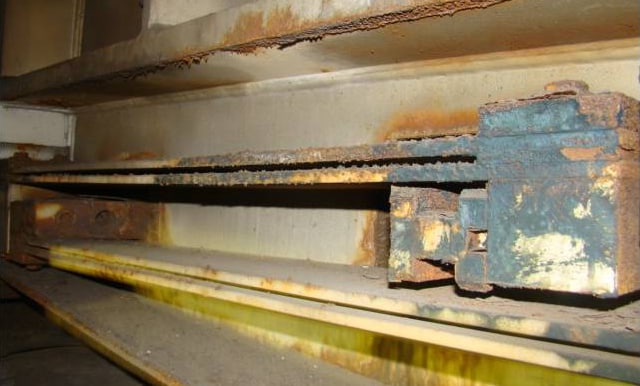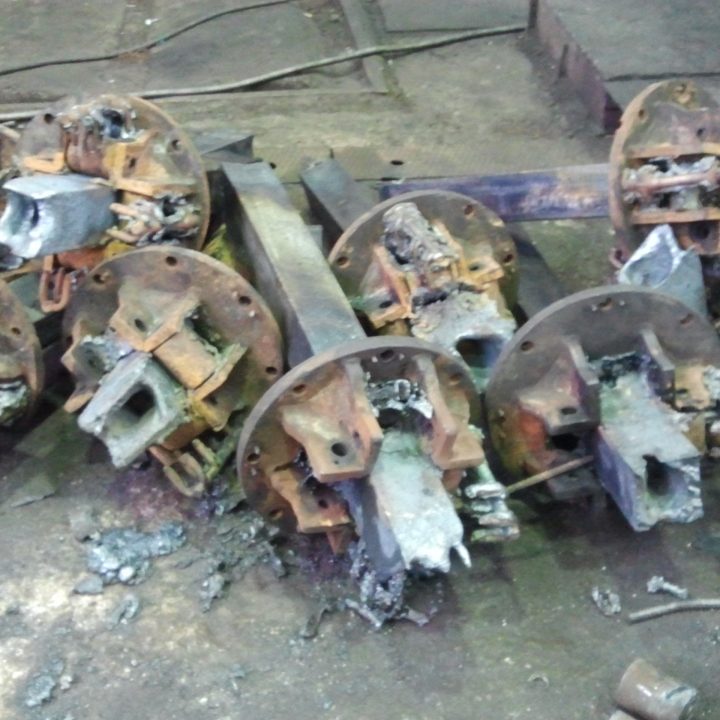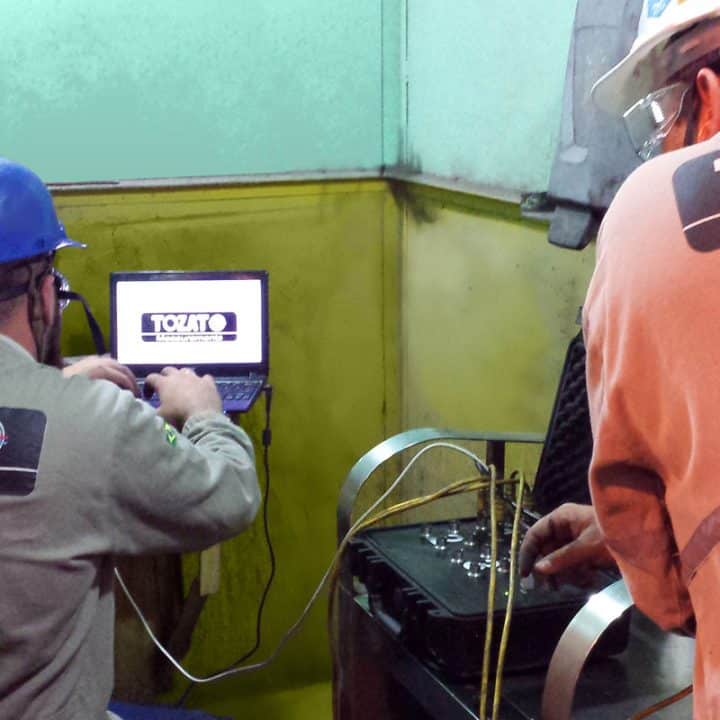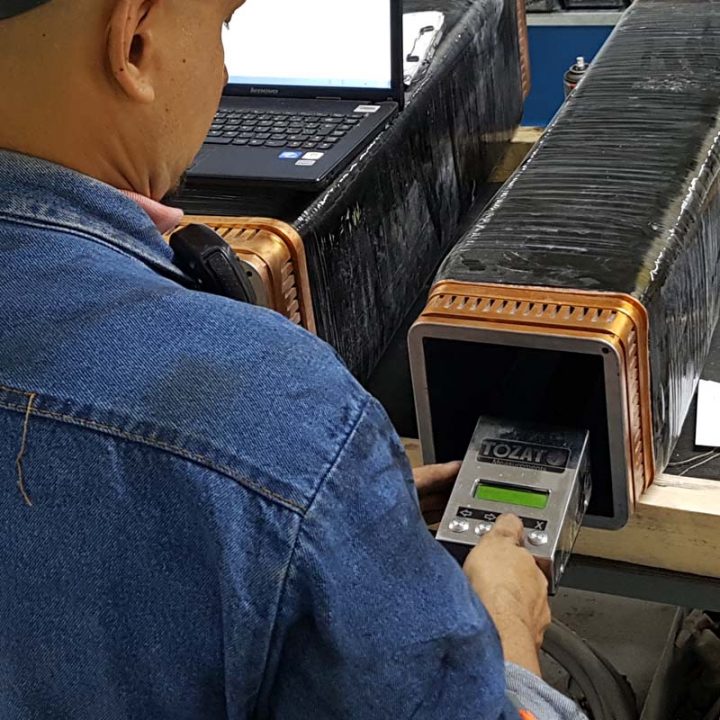A usual mistake made by companies that work with hydraulic continuous casting is to assume that the LVDT (linear voltage displacement transducer) is able to provide reliable information regarding the oscillation performance. However, the LVDT does not provide any kind of information directly on the oscillation table itself. It only is capable to give information about the hydraulic cylinder performance
After performing a mold oscillation-monitoring test on a billet producer CCM equipped with two cylinders and a spring-table, some considerable errors of stroke were found on the oscillation table of strand #6, which was presenting some severe problems of product quality and productivity as well.
Hydraulic Continuous Casting Data Colleting

Using equipment for oscillation trajectory and displacement analysis allowed to observe that the left side (sensors 1 and 2) and right side (sensors 3 and 4) were not completing the trajectory expected according the machine’s project. Moreover, there was a difference of almost 1.0 mm between the left and right side. In other words, the right side was displacing 1.13 mm less than expected and the left side 0.35 mm..
Afterwards, on a down day, while performing the predictive maintenance on the CCM, it was found a rusted leaf spring on the CCM left side. The rust was jeopardizing the spring elasticity, which was preventing the oscillation to reach the trajectory expected, and the LVDT readings did not show that.

The LVDT sensor is very important to control the oscillation performance¸ especially on the first oscillation stage, taking into account the importance of the cylinder on the mold’s cycle. However, it is necessary to have a high accurate and sensibility system to measure the real displacements of mold and oscillation table at the end of the oscillation cycle.
Upshot
Many mechanical parts between the hydraulic cylinder and the oscillation table can modify the projected trajectory of the mold: springs, bearings, coupling, fixing bolts, among other parts. When one of these elements is damaged, only readings taken by accelerometers sensors positioned on the four corners of the oscillation table can detect fails in order to help on the subsequent corrective procedures.













One comment
Thanks, it’s very informative